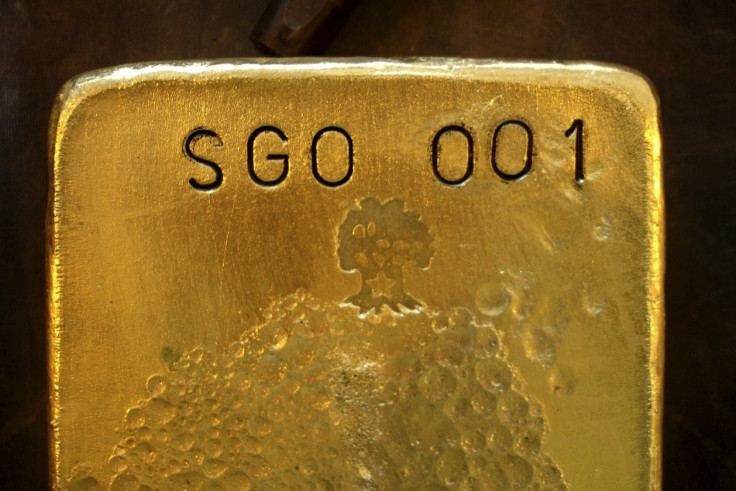Gold Off As Politicians Vow to Keep Greece in Euro Zone

Gold prices slipped below $1,800 an ounce on Thursday as stock markets extended gains, with assurances from Germany and France about keeping Greece in the euro bloc boosting appetite for assets seen as higher risk at the precious metal's expense.
Concerns over a potential debt default in the euro zone, centred on Greece, held the euro in a range and lent some support to gold prices, however.
Spot gold was down 1 percent at $1,802.20 an ounce at 1105 GMT, having earlier dipped as low as $1,798.49.
The metal is on track for a second week of losses and is down nearly 1 percent so far this month. It remains one of this year's best-performing commodities, however, up more than 27 percent since January.
Gains in so-called higher risk assets are curbing a further rise. European shares rose on Thursday as investor sentiment was boosted by Wednesday's conference call between France, Germany and Greece.
It's the denial stage that's taken hold of all the markets -- (a belief) that everything's going to be fine, the EU and U.S. leaderships can manage to put their economies to rights, said VM Group analyst Carl Firman.
I don't think that is the case, and I think it's only a matter of time before that comes home to roost. The gold price is probably going to benefit from that.
German Bund futures hit their lowest in almost two weeks on Thursday after signs of more willingness from policymakers to solve Greece's debt crisis, prompting some to trim positions in safe-haven bonds.
French and German leaders told Greece on Wednesday it was vital to implement reforms set under a bailout plan. Patience is wearing thin among euro zone members with Greece's failure to meet fiscal and structural reform targets.
CALMER WATERS
Gold prices have steadied after the extreme volatility seen earlier this month, which saw prices trading in a greater-than-$50 range for five successive trading sessions.
It is clear that the gold market is sorely in need of inspiration here, said UBS analyst Edel Tully in a note.
Short of an intensification or calming of the euro zone debt crisis, or a massive surprise from U.S. data, the gold market will likely have to wait for next week's (Federal Reserve) meeting for fresh impetus.
Metals consultancy GFMS said in a report on Thursday that it expected gold prices to break through $2,000 an ounce by year-end, as recovering investment added to already strong bar, jewellery and official sector buying.
World investment -- which includes activity in the coin and bar, exchange-traded fund, Comex and over-the-counter sectors -- is expected to climb 1 percent this year despite a sharp drop in interest in the first quarter.
HSBC lifted its gold price forecast for 2012 to $2,025 an ounce. The euro-zone debt crisis, currency wars, and deep uncertainty among investors are among the factors driving prices higher, it said.
On the supply side of the market, a Libyan central bank official last night poured cold water on the idea that the cenbank would sell more of its gold, after 29 tonnes was disposed of in April/May this year.
Silver was down 0.8 percent at $40.33 an ounce, spot platinum was down 0.7 percent at $1,795.99 an ounce, and spot palladium was up 0.1 percent at $716 an ounce.
BNP Paribas raised its silver and platinum forecasts and cut its palladium price view for this year and next. It said while higher gold prices were likely to benefit silver and platinum, palladium, the most industrial of the major precious metals, was vulnerable.
Palladium is the only precious metal to have fallen in price in the year to date. Its fundamentals have steadily deteriorated during the year, it said.
We now expect the market to be in surplus in 2011 and into the first half of 2012.
© Copyright Thomson Reuters 2024. All rights reserved.






















